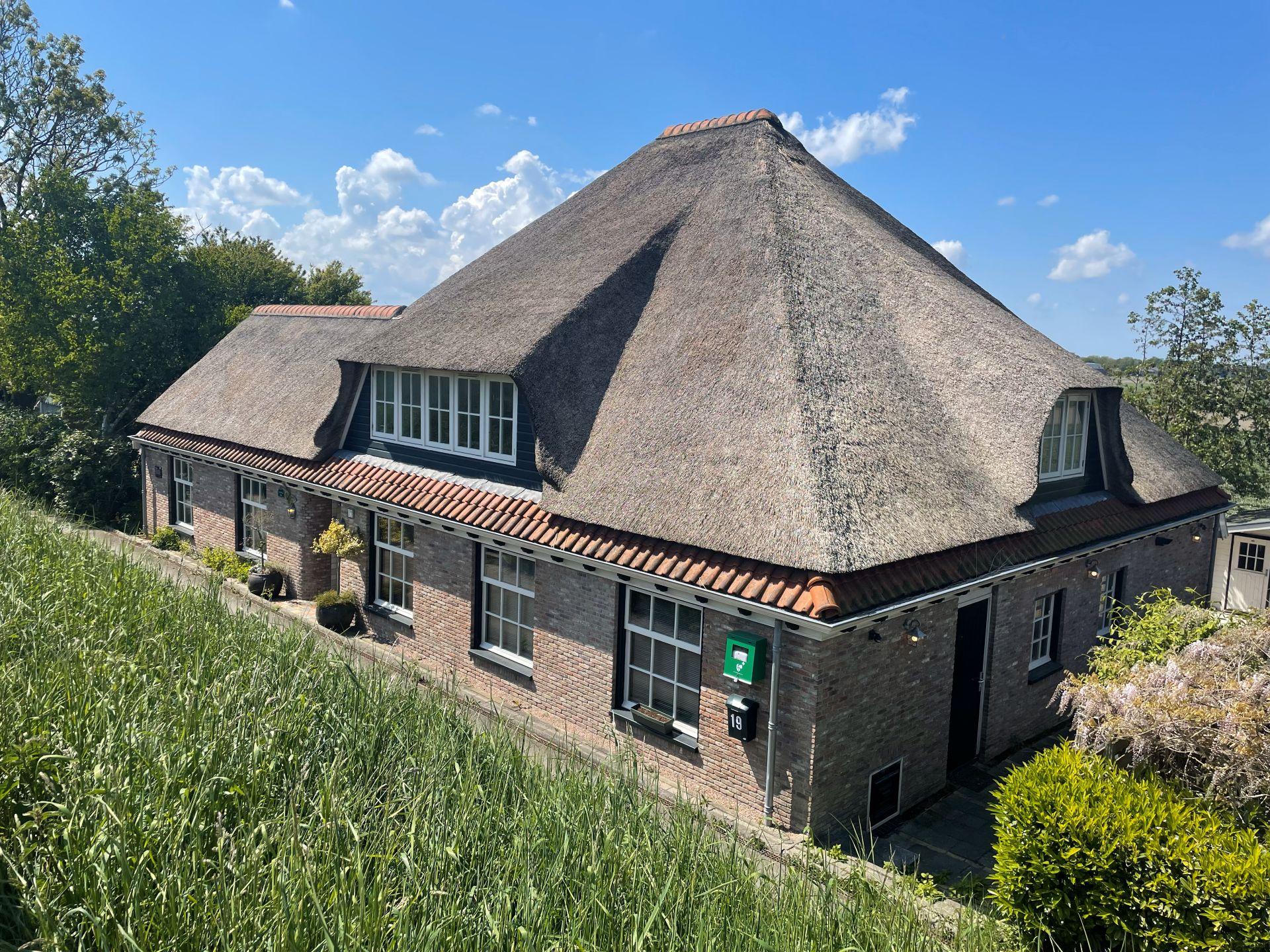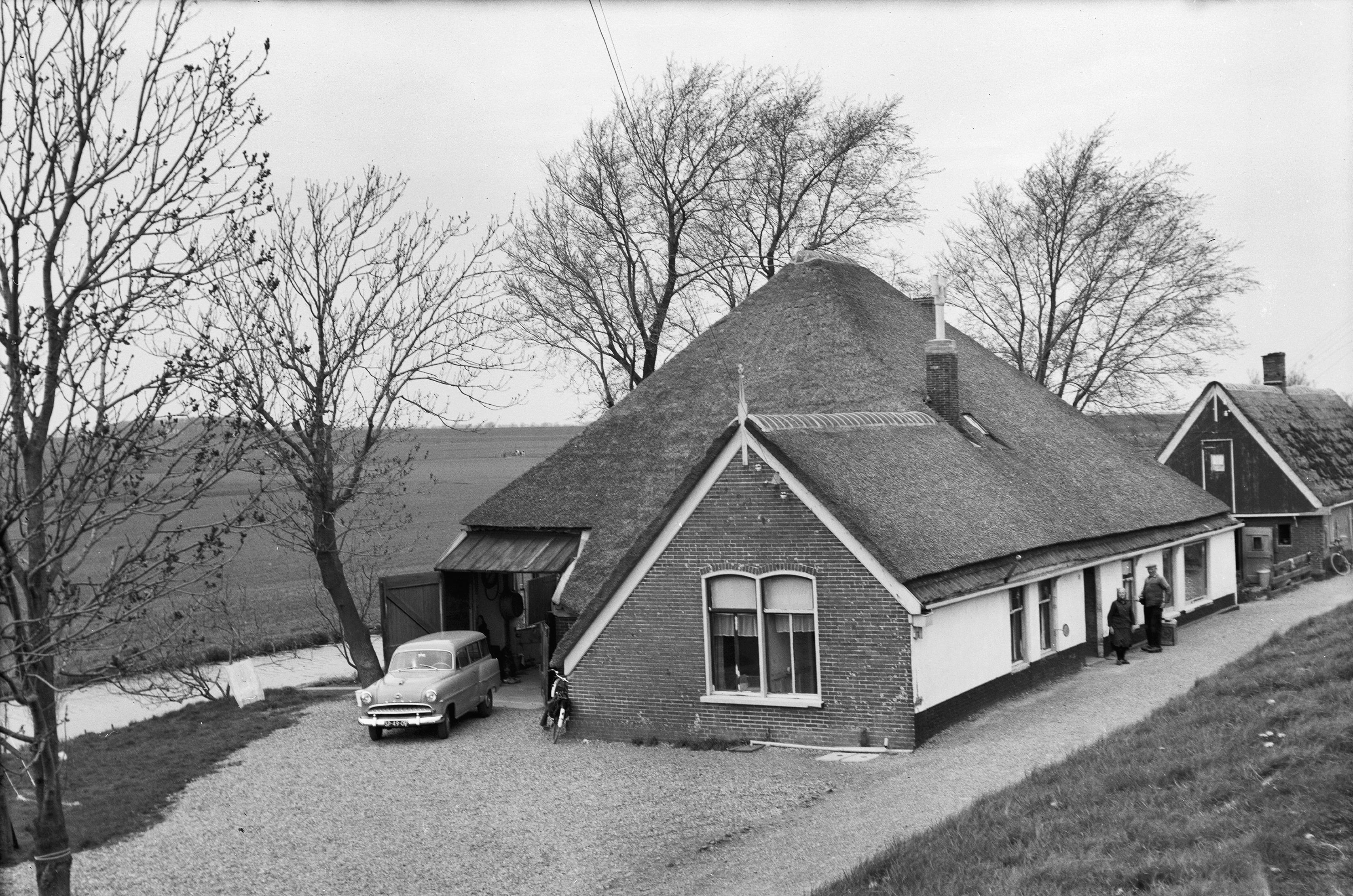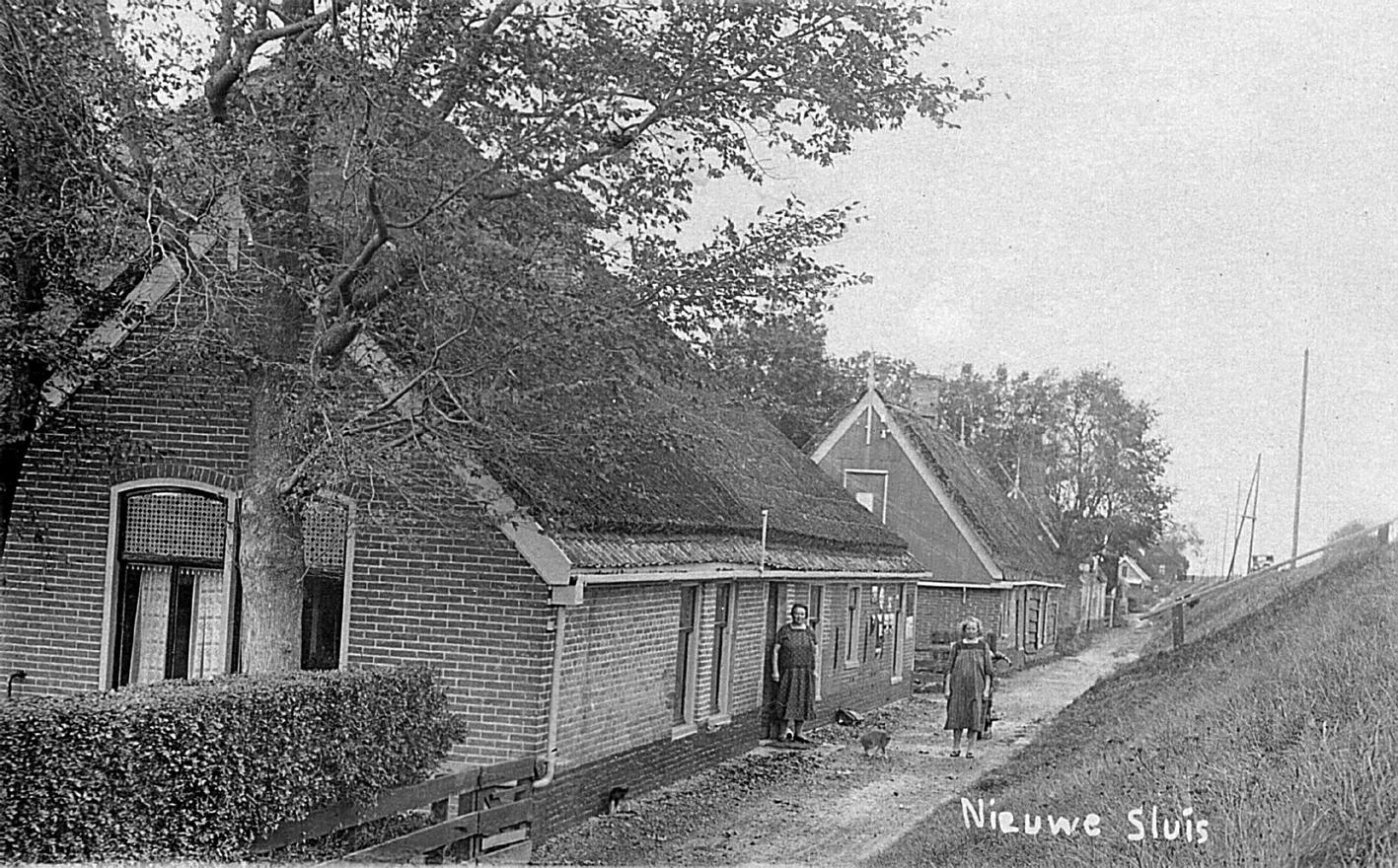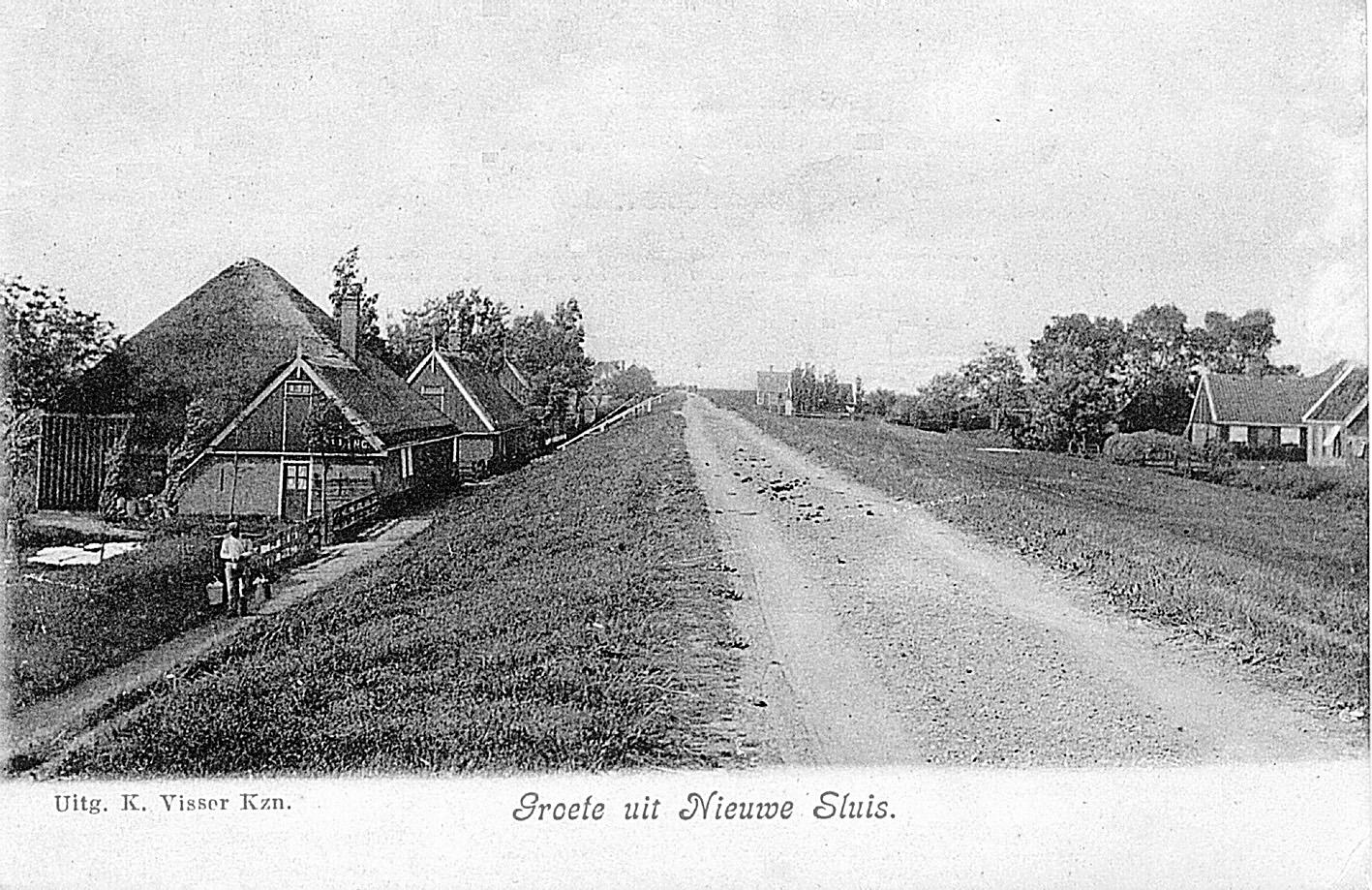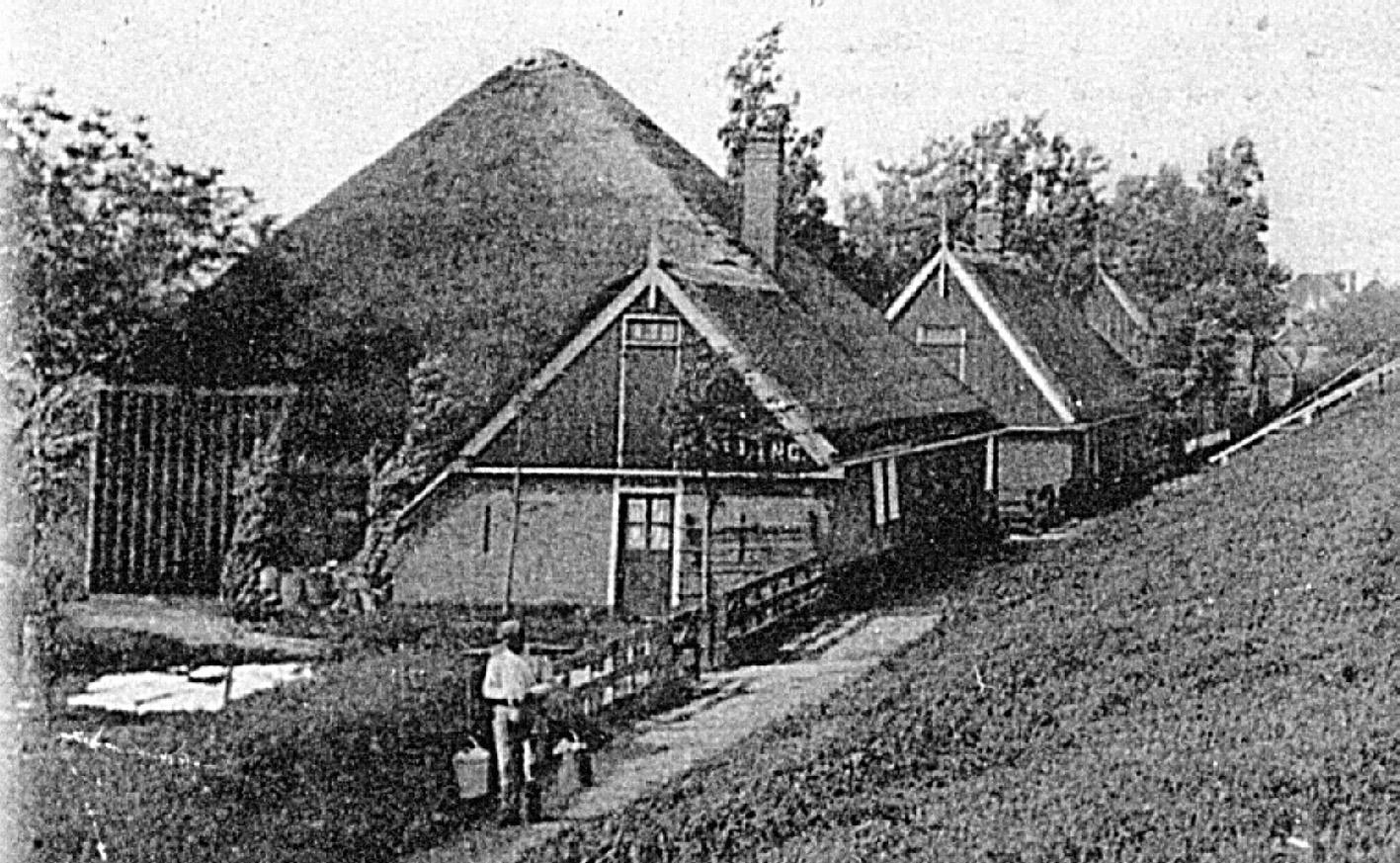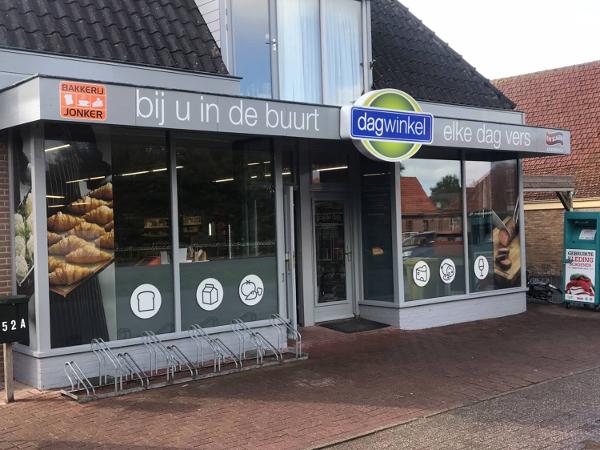The stolp farm is a type of ‘langhuisstolp’ and was probably built around 1611. That is just after the draining of the Wieringerwaard in 1610. The stolp farm was intended as an inn and changing place for horses of the barge between Wieringerwaard and Kolhorn. The name ‘De Stalling’ is on the rear facade, which probably refers to this. The current ditch ‘De Kolk’ that runs behind the stolp farm still follows the route of the original barge.
New Lock
From the beginning of the reclamation, workers settled on the Oostdijk of the Wieringerwaardpolder. The number of residents on the Oostdijk grew rapidly, so that it soon became a village: Nieuwe Sluis. With 33 houses, it was the largest hamlet in the polder. It was mainly the very poorest, farm workers and fishermen who lived on the Nieuwe Sluis. Nevertheless, the village quickly became known in the eighteenth century for whaling and because the residents played an important role in the lightshipping industry. The ships of the VOC had to transfer their merchandise from the East Indies to smaller ships at Wieringen in order not to run aground on the shallow Zuiderzee or at Pampus. The lighter ships were manned by the sailors of the Nieuwe Sluis. The village of Nieuwe Sluis therefore played an important role as a transit port for manure, roof tiles and bricks from Friesland, straw, hay and cattle to places along the former Zuiderzee.
The part east of the Oostdijk was created later, after the reclamation of the Waardpolder in 1834. Due to the reclamation of the Waardpolder, the Oostdijk lost its sea-retaining function. Nieuwe Sluis was and remained a fishing village until the village of Van Ewijcksluis in the Anna Paulownapolder became a competitor (1846). This village had a faster connection to the hinterland for travellers and goods to and from Wieringen, especially when the Den Helder – Alkmaar railway line was put into use in 1864. The current street and building appearance of Nieuwe Sluis still shows clear characteristics of the original settlement along a dike.
Construction history
The building has been inhabited by several families at the same time for a long time. It has also been a shop and a butcher’s shop, with cows in the stable. The farmhouse has been renovated many times. The wooden gable has been changed to a brick gable and the characteristic details such as water boards, bargeboards, king post and T-windows have disappeared. In 2004 the farmhouse was extensively renovated.
Valuation
The farm was designated as a municipal monument in 2022. The farm is of cultural-historical value as a recognizable remnant of the port and fishing past of Nieuwe Sluis and as part of the oldest buildings on the Nieuwesluis. View the full description of the monumental values via the monument register of Hollands Kroon.
Sources – Farm Foundation North Holland via www.boerderijenstichting.nl – Monument Register via www.hollandskroon.nl
